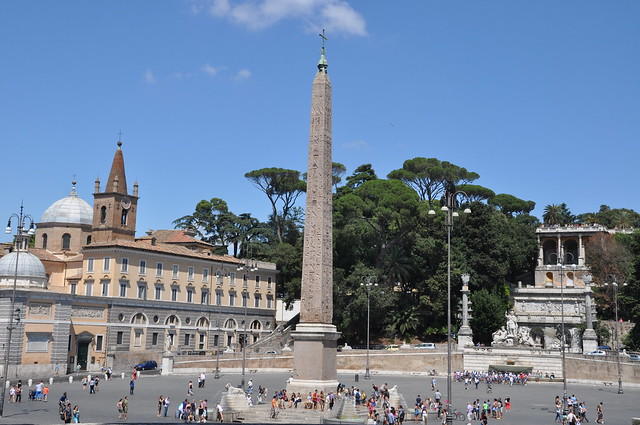
A Praça do Povo está localizada mais a norte do centro histórico da cidade de Roma, na sua proximidade está uma outra praça famosa, a Piazza di Spagna. Construída no século XVI funcionava como porta de entrada na cidade para quem viesse do norte.
Ao centro com uma pequena fonte aos pés está um Obelisco egipcio de Ramsés II com 36 metros de altura. Não destaca apenas pelo seu tamanho mas também pelo facto de contrastar com o que está á sua volta, grande parte tem o estilo romano. O artefacto trazido do Egipto para Roma, foi depois trasladado do Circo Massimo pela altura da construção da praça.
The People's Square is located further north of the historic center of Rome, in its proximity there is another famous square, Piazza di Spagna. Built in the sixteenth century worked as a gateway to the city for those who come from the north.
At the center with a small fountain at the foot is an Egyptian Obelisk of Ramses II with 36 meters tall. It stands out not only for its size but also because of the contrast with what is around it, most of it of Roman style. The artifact brought from Egypt to Rome was in the Circus Maximus then moved here by the time of the construction of the piazza.
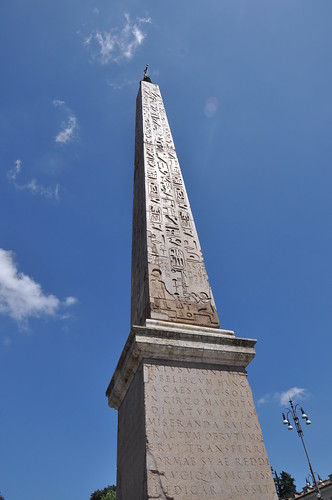
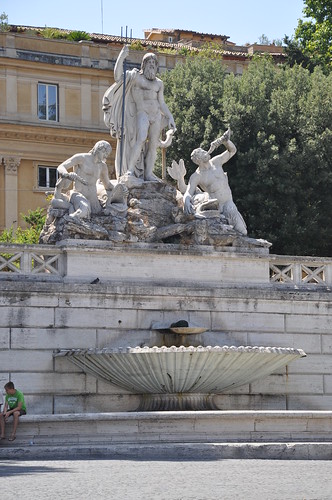
Neptune also has a presence in the square in a fountain holding his trident.
On one side there are two churches whose facade suggests they are asymmetric but in reality there are some differences between them, they are also known as the twins. The left is Santa Maria di Montesanto and the right is the Santa Maria dei Miracoli, separating them is the famous Via del Corso (which connects Piazza del Popolo to Piazza Venecia).
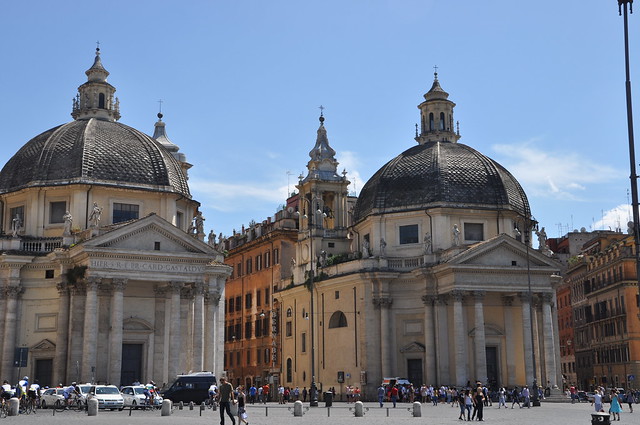
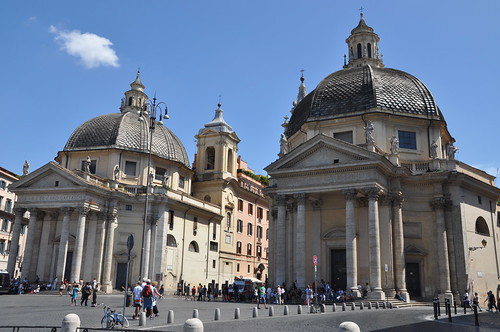
From the square we see the Monte Pincio whose name is from the Roman family that lived in that area. You need to climb a few stairs to get to the top but they say the view is wonderful (we had no time).
The Via del Corso, Via del Babuino plus the Via di Rippeta form the famous Trident of Rome, all starting from this square. At the center is a fountain that depicts the goddess of Rome between the Tiber and Aniene. At her feet one of the most famous sculptures in Italy, the Capitoline Wolf feeding Romulus and Remus, the first founder of Rome and the second Rome's king.

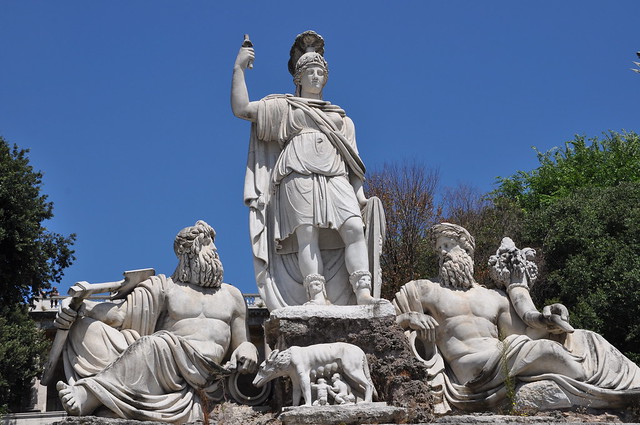

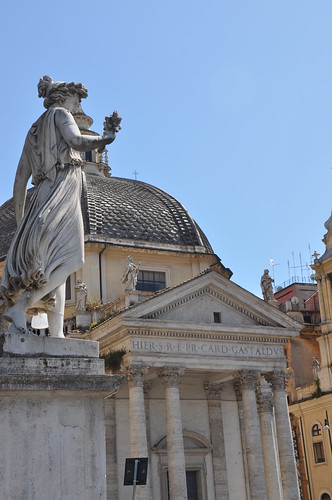
At the center with a small fountain at the foot is an Egyptian Obelisk of Ramses II with 36 meters tall. It stands out not only for its size but also because of the contrast with what is around it, most of it of Roman style. The artifact brought from Egypt to Rome was in the Circus Maximus then moved here by the time of the construction of the piazza.


Também Neptuno marca presença na praça numa fonte segurando o seu tridente.
Num dos lados estão as duas Igrejas cuja fachada sugere que são assimétricas mas que na realidade entre elas há algumas diferenças, são também conhecidas como as gémeas. A da esquerda é a de Santa Maria di Montesanto e a da direita é a Santa Maria dei Miracoli, a separá-las está a famosa Via del Corso (que liga a Piazza del Popolo até á Piazza Venecia).
Neptune also has a presence in the square in a fountain holding his trident.
On one side there are two churches whose facade suggests they are asymmetric but in reality there are some differences between them, they are also known as the twins. The left is Santa Maria di Montesanto and the right is the Santa Maria dei Miracoli, separating them is the famous Via del Corso (which connects Piazza del Popolo to Piazza Venecia).


Da praça podemos ver o Monte Pincio cujo o nome é o da familia romana que vivia naquela zona. Há que subir umas quantas escadas para chegar ao topo mas dizem que a vista é maravilhosa (nós não tínhamos tempo).
A Via del Corso, a Via del Babuíno mais a Via di Rippeta formam o famoso Tridente de Roma, partindo todas da praça. Ao centro está uma fonte que representa a deusa de Roma entre o rio Tibre e o Aniene. Aos seus pés uma das esculturas mais famosas de Itália, a loba capitolina dando de comer a Rómulo e Remo, o primeiro o fundador de Roma e o segundo o seu rei.
A Via del Corso, a Via del Babuíno mais a Via di Rippeta formam o famoso Tridente de Roma, partindo todas da praça. Ao centro está uma fonte que representa a deusa de Roma entre o rio Tibre e o Aniene. Aos seus pés uma das esculturas mais famosas de Itália, a loba capitolina dando de comer a Rómulo e Remo, o primeiro o fundador de Roma e o segundo o seu rei.
From the square we see the Monte Pincio whose name is from the Roman family that lived in that area. You need to climb a few stairs to get to the top but they say the view is wonderful (we had no time).
The Via del Corso, Via del Babuino plus the Via di Rippeta form the famous Trident of Rome, all starting from this square. At the center is a fountain that depicts the goddess of Rome between the Tiber and Aniene. At her feet one of the most famous sculptures in Italy, the Capitoline Wolf feeding Romulus and Remus, the first founder of Rome and the second Rome's king.




A verdade é que são muitas as praças famosas de Roma, talvez as mais sejam a de Espanha e a Navona, ainda assim esta é sem dúvida uma das que temos que visitar, pela sua dimensão e pela riqueza de elementos que a rodeiam.


Sem comentários:
Enviar um comentário